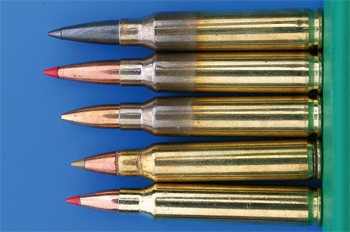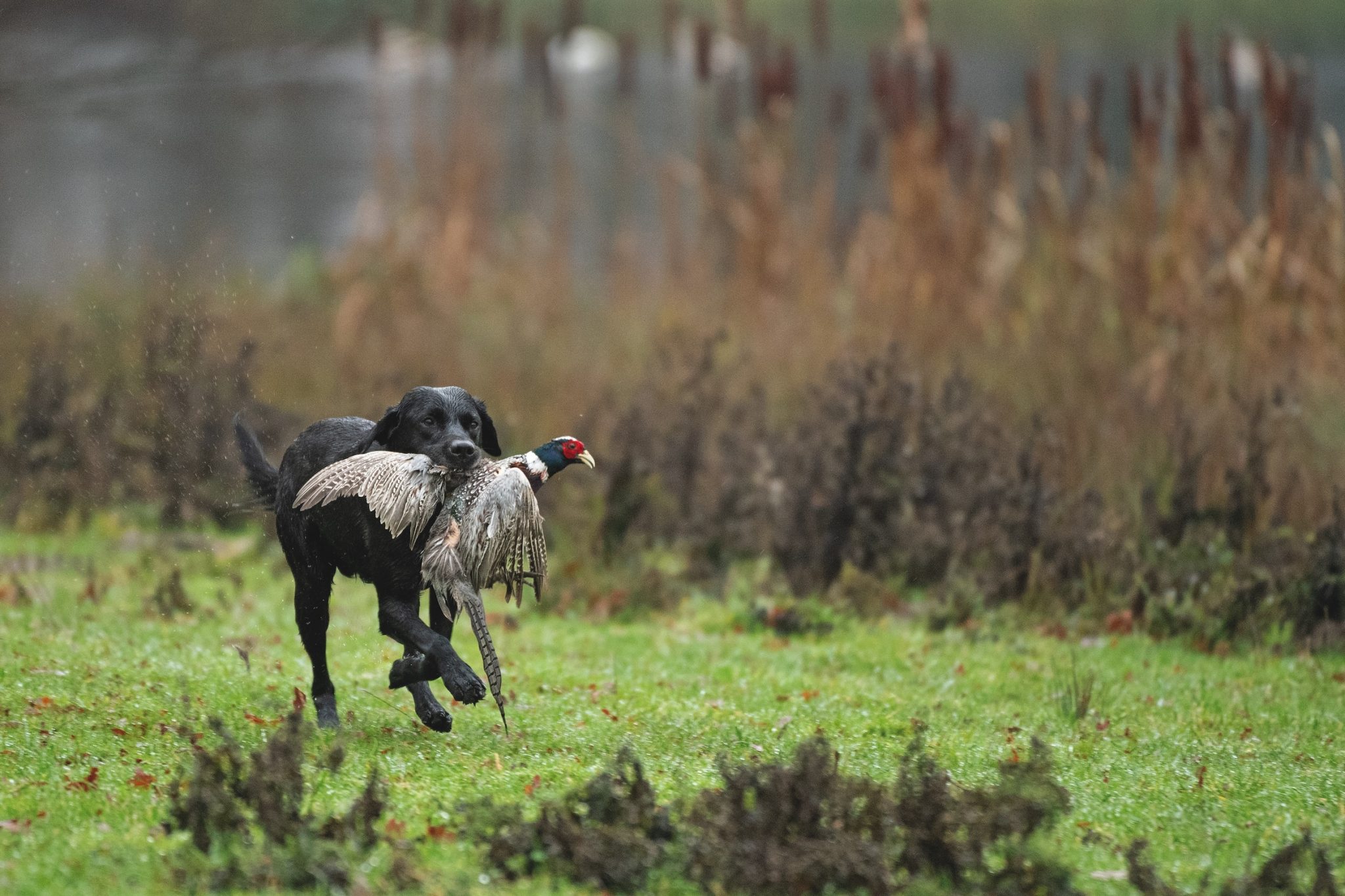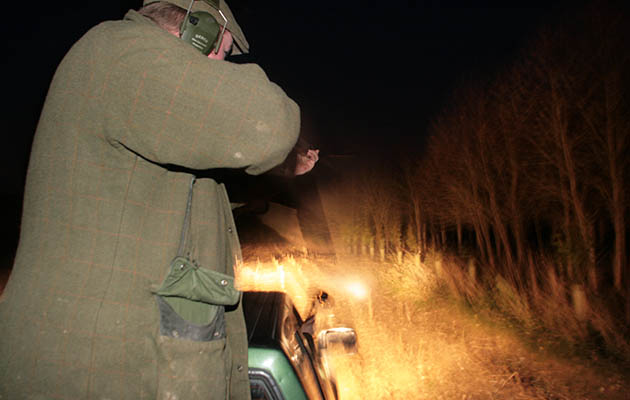- News
- Gundogs
- Shooting
- Recipes
- Gear
-
-
- Industry Jobs
- Get involved
- More
-
-
More
-
-
News
Record wildfire prompts Scottish U-turn on muirburn licensing
By Hollis Butler (Group News Editor)
-
-
Win CENS ProFlex DX5 earplugs worth £1,149 – enter here
.223 Remington cartridges review
.223 Remington cartridges: Developed for the US military, the .223 Remington provides the perfect vermin and small deer calibre, particularly if you are prepared to reload.

Like many popular cartridges used in the field, the .223 Remington started life as a military round. This can only be an advantage, as the calibre was exhaustively tested in the US, where it was developed.
Originally the .223 was designed as a low-recoiling mid-range assault cartridge for troops and developed for the AR-15 and later the M16.
The .223 was standardised in 1964 by the military. This was a bold move as it came at a time when larger calibres, such as the 7.62 NATO (.308), were the standard and it pushed a trend towards smaller and more efficient design. Once military approval was given, Remington launched a sporting version of the round on the civilian market as the .223 Remington.
The design stemmed from using the same head size as the .222 Remington, though it has a longer overall length (yet not as long as the .222 Remington Magnum) and shorter neck. The cartridges are not interchangeable, but beware – the .223 will fit into a .222 Remington Magnum chamber with dangerous consequences.
A niche in the market
The .223 filled a niche between the .222 Remington and the larger .22-250 round, and serves as an excellent general small game and varmint round. As always, however, the choice of rifling twist is crucial if you wish to maximise the benefits of the wide range of bullet weights available and suitable for use in the .223.
Most .22 centrefire rounds employ a one-in-12 or one-in-14 twist for lighter bullets but, thanks to its military heritage, the .223 can also use heavier bullet weights and tighter twists of one-in-nine, one-in-eight or even one-in-seven, making it a truly flexible round to reload for.
Despite its .223 nomenclature, the Remington uses .224 calibre bullets, ranging from as light as 30-grain varmint profiles through to the mammoth and specialised 90-grain wind-bucking bullets for longer range work. With a comparison between the .222 and the .223 using the same bullet style and weight of 50 grains, the former has a muzzle velocity of, on average, 3,200fps, while the .223 trots along at 3,400fps, a 200fps advantage, with only a minimal powder increase of two grains over the .222.
In fact, the increased .223 case capacity is capable of launching a 40-grain bullet at 3,800fps, and that is using commercial brass rather than military brass, which is thicker and will hold less.
This is great for vermin, and a 55-grain at 3,275fps is more than good enough for Scottish roe, while the 75-grainers for longer range pests achieve nearly 2,800fps. The .223 Remington is a popular round and is chambered in nearly all the available rifle makes – the industry provides varied and extensive ammunition, with both factory ammunition and components for reloaders.
Factory loads
The .223 factory ammunition abounds with a good range of bullet weights to suit any purpose. Remington offers the AccuTip bullet in both 50- and 55-grain projectiles, producing a velocity of 3,323fps and 3,277fps respectively from the RPA rifle with a 24in barrel. Sako offers a Gamehead bullet in both 50- and 55-grain, which produces comparable velocities that double as both fox or Scottish roe rounds. Federal caters for both fox shooters and roe stalkers – the V-Shok range has a 40-grain Nosler ballistic tip, which reaches more than 3,744fps, ideal for foxes. Federal’s 55-grain Sierra Game King makes a good Scottish roe round or there is the more frangible Ballistic Tip bullet for longer range foxes. Both produce a velocity of nearly 3,250fps.
Hornady has an excellent line of .223 ammunition named Varmint Express. The brass and manufacture is first rate and it has a proprietary 40-grain V-Max, which travels at 3,861fps, depending on the rifle’s barrel length. The larger 55-grain V-Max pushes 3,277fps and produces 1,312ft/lb energy. Accuracy with all the above loads is as good as you would expect from an efficient small-calibre round such as this. It is more than capable of ½in groups at 100 yards from the right rifle and often less with a really good one.
Reload options
It is through reloading that the true potential can be achieved. Efficient and prudent loading achieves a no fuss, low-recoiling highly accurate round that is easily suppressed and very capable at sensible ranges. If the .223 is an adequate calibre for the military, then it’s more than good enough for fox and now muntjac and Chinese water deer, as well as roe in Scotland, with the correct bullet, in my view. Barrel length and twist also play an important role with reloading. As a general rule, light bullets equal slow twists – ie.10in, 12in or 14in – while heavy bullets equal faster twists, one-in-10 or faster. With the small case capacity the .223 is suited to powder burning rates of the fast to medium variety, excelling with Reloder 7, Hodgdon Benchmark, Vit N120 or N133, Varget and H322.
The stubby 35-grain V-Max is really meant for .22 Hornet use, but it can be launched at nearly 3,900fps with a load of 27 .25 grains of H322. Accuracy is not as good as the more streamlined heavier bullets, however. Light bullets, such as the 40-grain V-Max, shoot well when using powders such as Benchmark, with which a load of 28.75 grains produces a velocity of 3,843fps and 1,312ft/lb energy from a 24in barrel. Similarly, Vit N120 produced close to 3,800fps with the same bullet weight, but using only 23 grains of powder due to the faster burn rate. Using a slower powder such as Varget with 26 grains, the 40-grain V-Max leaves the barrel at only 3,409fps and 1,032ft/lb. Accuracy in your own rifle will dictate which load you choose.
Fifty-grain projectiles such as the Ballistic Tip or the Speer TNT and the excellent V-Max use the same powders, though the test rifle (an RPA Quadlite) seemed to like 24.5 grains of Vit N133, Federal small match primers and Lapua brass. With a top velocity of 3,448fps and 1,320ft/lb energy, the 50-grain Ballistic Tip bullet is a good fox round at any distance. The 52-grain bullet weights, such as the Berger Hollow Point with 23.5 grains of H322, can achieve velocities in the region of 3,375fps, which leads me to 55-grain and 60-grain bullets.
At 3,250fps, using a load of 24.25 grains of Benchmark powder, a 55-grain Ballistic Tip produces 1,290ft/lb energy and is a dependable, hard-hitting bullet. A Nosler Partition 60-grain flat base can be pushed at nearly 3,100fps using a charge of 23 grains of H322, but you may need a faster twist such as a one-in-10 or faster to stabilise it and achieve the best accuracy. This load makes a good roe round (in Scotland).
For the longer range fox or varmint devotee, there are some nice specialist bullets in the 75- to 90-grain mark, which, though they shoot at slower velocities, have the advantage that their superior ballistic coefficients buck the wind and retain energy down-range.
The 75-grain A-Max is a superb performer, both accurate and dependable despite its less frangible nature compared with the V-Max. A load of 23 grains of Vit N133 pushes the velocity to 2,811fps and produces 1,316ft/lb energy. It is capable of vermin-size hits at surprisingly long ranges, but this requires a one-in-nine rifling twist or faster to stabilise it. The 90-grain bullets are really meant for specialist work.
Down-range performance
Where the .223 wins over the .222 and its larger rival the .22-250 is good ballistics with the minimum of powder and maximum efficiency, it’s hotter than a .222 but not as hot as a .22-250 so as to worry about barrel wear and reduced life. A 40-grain Hornady V-Max from a .223 launched at 3,843fps and zeroed at 100 yards, drops 1.2in at 200 yards and 6.8in at 300 yards, though if you zero it at 200 yards you are never more than 0.8in high up to this range and then only 4.8in low at 300 yards. So, working at longer ranges, zeroing the rifle at 200 yards would give you a definite advantage.
With minimal recoil, especially with a good moderator fitted, the shooter is capable of spotting his own shots to confirm a good hit. The .223 is a no-nonsense fox and small deer species calibre that gives you more distance than the .222 and exhibited good terminal ballistics for humane kills. With so many manufacturers producing ammunition, rifles and reloading components the .223 will be with us for many a year yet.
Read a review of the .17 Remington cartridge
Read a review of the .22 Hornet calibre
Read a review of the .338 BR calibre
Related Articles
Get the latest news delivered direct to your door
Subscribe to Shooting Times & Country
Discover the ultimate companion for field sports enthusiasts with Shooting Times & Country Magazine, the UK’s leading weekly publication that has been at the forefront of shooting culture since 1882. Subscribers gain access to expert tips, comprehensive gear reviews, seasonal advice and a vibrant community of like-minded shooters.
Save on shop price when you subscribe with weekly issues featuring in-depth articles on gundog training, exclusive member offers and access to the digital back issue library. A Shooting Times & Country subscription is more than a magazine, don’t just read about the countryside; immerse yourself in its most authoritative and engaging publication.









